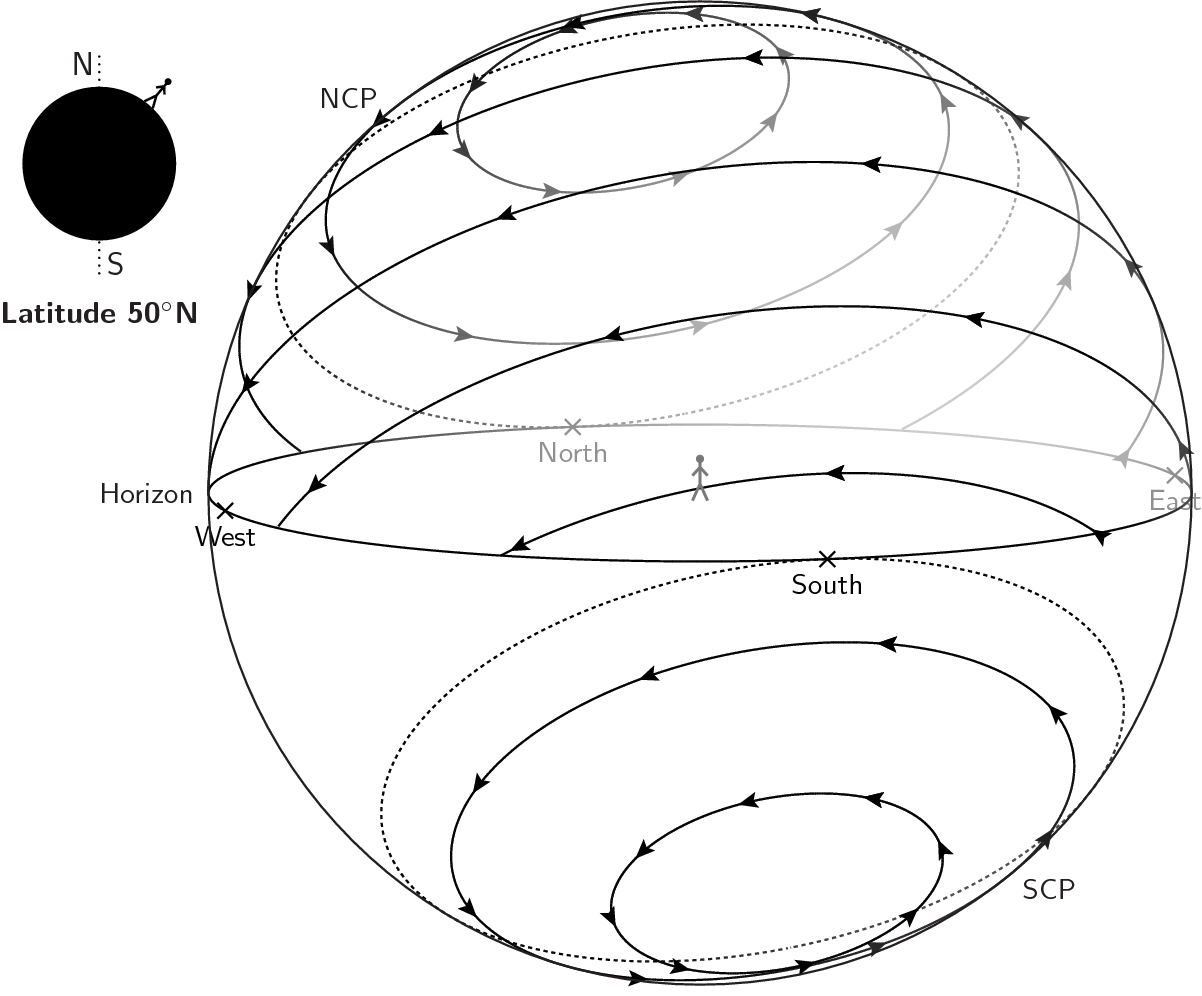Meridian
The observer's meridian is a north-south line across the observer's sky. Specifically, it is the great circle passing through the points due north and south on the observer's horizon, and through the zenith.
As the night sky rotates around the celestial poles (labelled NCP and SCP in the diagram to the right), objects rise above the eastern horizon, and set along the western horizon. They appear highest in the sky at the midpoint between setting and rising, when they cross the north-south line across the observer's sky – the meridian.
At this time, the object is said to culminate, or equivalently said to be transiting the meridian, or often simply transiting.
Atmospheric conditions typically improve significantly with distance from the horizon, and so the time of an object's culmination is often the optimal time to observe it.
The observer's local sidereal time is defined as the right ascension of stars which lie along the observer's local meridian at any moment in time.
In the past, when astronomers wanted to accurately measure the positions of stars, they often built transit instruments: specially designed telescopes which could only point along the line of the meridian, and were very precisely aligned to do so. By recording the exact time when stars passed a cross-hair in the centre of the field of view, the right ascension of the star could be determined.
